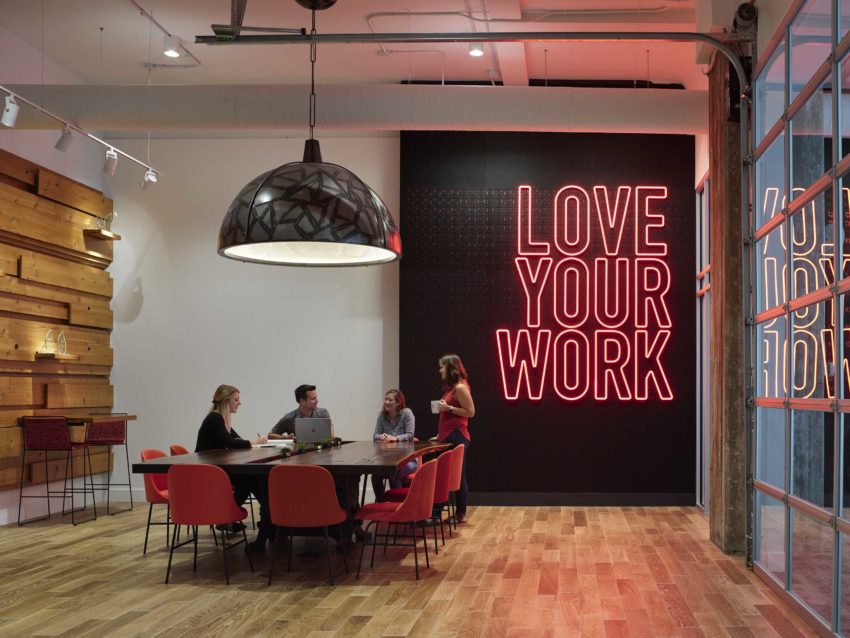Tackling the “Great Resignation” with a Great Workplace Experience
By Camille Tighe, Vocon Senior Workplace Strategist
The percentage of US employees leaving their jobs for new opportunities is at its highest level in more than two decades.
Amidst such upheaval, the “Great Resignation” is forcing organizations to reexamine the work experience they’re offering employees.
McKinsey research suggests that a positive work experience results in employees being 16 times more engaged and 8 times more likely to stay with their current employer than those at organizations with a less compelling experience.
A record 4.3 million people quit their job in August – US Dept of Labor.
41% considering quitting according to a Microsoft survey of 30K workers – that increases to 51% when looking a Gen Z alone.
Nearly half of US employees are actively looking for a new job – Gallup.
Organizations can leverage a powerful asset in their arsenal – the work environment – to strengthen employee connection to the company, create a sense of belonging, and effectively support employee workstyles to help retain top talent.
To help get it right, we suggest focusing on four key themes.
Establish a New Purpose
In a Vocon survey of more than 6,500 employees, 90% of them prefer to work in a hybrid manner – working both in the office and remotely at points throughout the week. What purpose does the workplace now serve when we can work anywhere?
Organizations are compelled to define the role the office plays in supporting their people, their work, activities and cultural goals. For most, the future workplace will serve as a destination for connection, collaboration, culture and creative thinking. Do you have the right mix of spaces to support these new interactions?
Build Relationships and Community
In that same Vocon survey, employees shared what they desire most in an office experience. Their top priority is building relationships (65%), followed by socialization (64%), collaborating spontaneously with colleagues (53%), and linking in with their company culture (53%).
A strong sense of culture is directly linked to employee engagement and retention and is essential to a growing business. Employers have the opportunity to re-create and customize their work environment to ignite teamwork and foster the sense of community the workforce so demands.
While employees might use their home offices for individual work, the future workplace design will emphasize togetherness, encourage social connection and help employees work together better when they are in the office.
Enable True Flexibility
Our research along with countless other reports cite employee desire for flexibility the top concern as we emerge from the pandemic and return to the office. Whether that’s flexibility by location, by when they work, or how they work, employees are leaving organizations that are not providing those options.
While employees want the freedom to work from anywhere, they’re not ready to abandon the workplace altogether. Just a small percentage surveyed want to work remotely full time. The vast majority – about 90% – prefer to come to the office 2 or more days a week, reinforcing the ongoing need for the work environment to be an organization’s cultural and operational anchor despite shifts in the nature of work.
Provide Supportive Space and Technology
Today, employees are looking for a dynamic workplace where teams can connect in-person and exchange ideas, while also staying connected to remote colleagues.
The workplaces of those organizations enjoying the highest levels of employee engagement and worker satisfaction embrace flexibility and offer a mix of work settings that balance collaborative areas with spaces dedicated to privacy and concentration.
In this emerging hybrid work environment, integrating the proper technology and room set up will be critical to engage and empower employees, and moreover create an equitable experience for those in the office as well as those who are not.
Top Design Features to Encourage a Great Workplace Experience
- Variety of workspace types
- Great amenities and communal areas
- Informal work hubs
- Quiet rooms to support focused work
- Integrated, seamless technology
